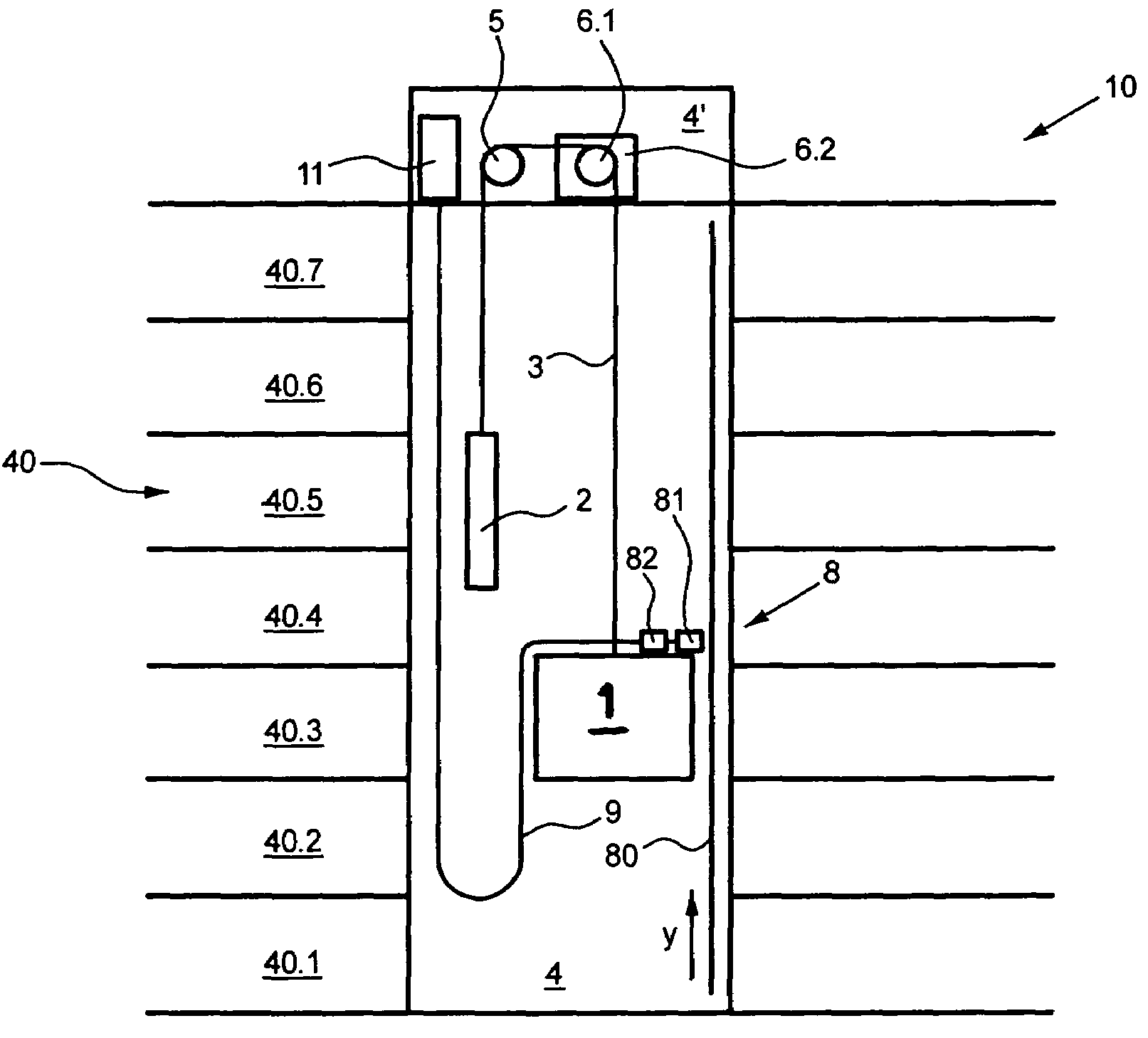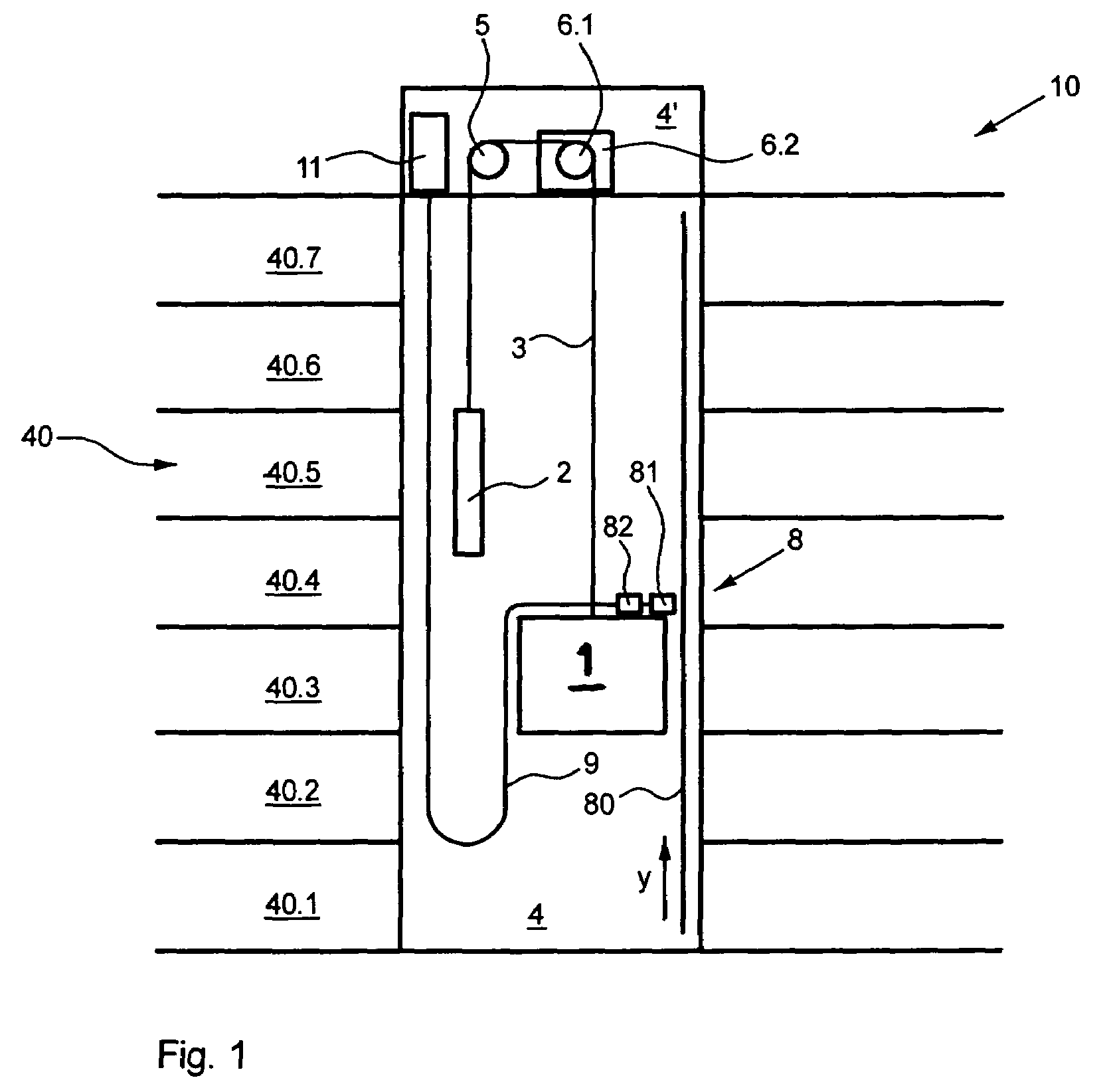Elevator installation and method for determining and analyzing an elevator car position
a technology for elevators and car positions, applied in the direction of elevators, instruments, transportation and packaging, etc., can solve the problems of increasing reducing the strength of magnetic fields, so as to achieve the effect of ensuring the accuracy of measurement, and reducing the cost of production
- Summary
- Abstract
- Description
- Claims
- Application Information
AI Technical Summary
Benefits of technology
Problems solved by technology
Method used
Image
Examples
first embodiment
[0043]FIG. 5 shows a device 8a for determining the car position according to the present invention. Shown again are a single-line code mark pattern 80b with code marks 83b of length λ2 which is arranged in the elevator hoistway in a positionally fixed manner, a sensor device 81b with a number of the sensors 85, 85′ which are integrated in a sensor housing 81.1b and scan the code mark pattern 80b, and the analyzer 82. According to the present invention, the sensor device 81b contains two complete sensor groups 87 and 88 which each have two rows of sensors 87.1, 87.1′ and 88.1, 88.1′, each of which encompasses a number of the sensors 85 and 85′ respectively. In each case, along the length of travel the sensors 85′ are arranged offset by half the length λ2 / 2 of the code marks 83b relative to the sensors 85. Each of the two complete sensor groups 87, 88 has essentially the same functions as the sensor group of FIG. 2 described above. Both of the sensor groups 87, 88 scan the code marks ...
second embodiment
[0050]FIG. 8 shows a second embodiment according to the invention of a device 8c for determining the position of the car. Shown again are an elevator hoistway with a single-line code mark pattern 80c arranged in a positionally fixed manner with code marks 83c of length λ3, a sensor device 81c with a number of the sensors 85, 85′ which scan the code mark pattern 80c and are integrated in a sensor housing 81.1c, and the analyzer 82. According to the present invention, this sensor device 81c also contains two complete sensor groups 87, 88. Each of the two sensor groups encompasses sensors 85 and, offset by half of their respective length (λ3 / 2) relative to these in the direction of travel y, sensors 85′, in the present variant embodiment all of the sensors 85 and 85′ which are assigned to one of the sensor groups 87, 88 respectively being arranged in one single sensor line 87.1, 88.1. The latter is possible in this case because the relationship between the length λ3 of the code marks 8...
PUM
 Login to View More
Login to View More Abstract
Description
Claims
Application Information
 Login to View More
Login to View More - R&D
- Intellectual Property
- Life Sciences
- Materials
- Tech Scout
- Unparalleled Data Quality
- Higher Quality Content
- 60% Fewer Hallucinations
Browse by: Latest US Patents, China's latest patents, Technical Efficacy Thesaurus, Application Domain, Technology Topic, Popular Technical Reports.
© 2025 PatSnap. All rights reserved.Legal|Privacy policy|Modern Slavery Act Transparency Statement|Sitemap|About US| Contact US: help@patsnap.com



